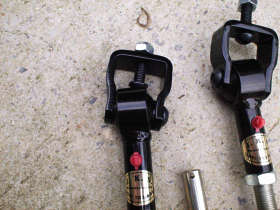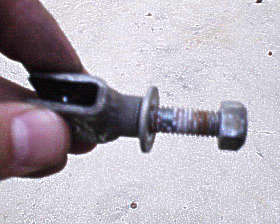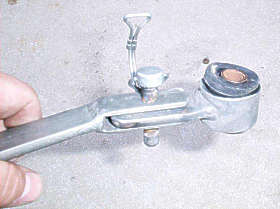Back to Features Page We Try The New JKS Quick Disconnects By, TXJEEPER |
|||||
|
JKS Quick Disconnects for Jeep TJ's and XJ's How many times have you found yourself screaming profanities as you had your buddy jumping up and down on your bumper in order to reconnect your swaybar links? For us, it was too many. Luckily, though, JKS has come to our rescue with their new swaybar Quick Disconnects. So what could be so different with these that we're making such a big deal out of them? Two things, mainly. First, they are length-adjustable. For us, this was a big plus, since we have a custom steering setup. We have done a knuckle-over conversion and had to move the swaybar mount on the passenger side. This, in turn, required us to shorten our swaybar link on that side. The JKS fits just right on both sides now! The other big
thing is that these new disconnects have swiveling joints at both ends.
They also rotate along the axis of the shaft. These two movements make
it extremely easy to reconnect the swaybar, even when your rig is not
sitting perfectly level.
Another neat feature of the disconnects is the holding pin. When you pull the clip pins out, you rotate your swaybar up into the fender wells. You can then repin the disconnects to your frame, using the included storage pins (between disconnects in the photos above). Installation
is a snap, but be prepared with your normal tools, plus Allen drivers,
a 1/4" drill bit, and a 5/16 screw tap that will get through the
tough steel frame of your Jeep. Installation if all goes well should
take about an hour or two and can be done in the driveway.
|
|||||




